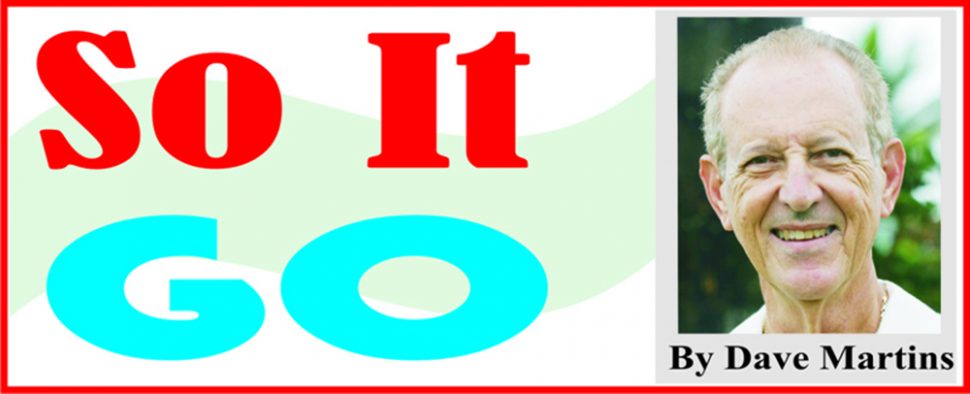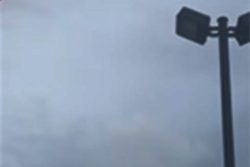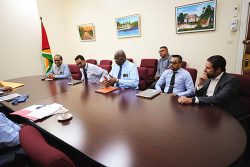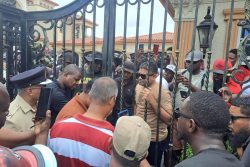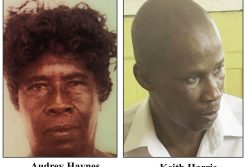One of the little known stories in the Dave Martins folder would be the time I spent after graduating from Saints Stanislaus College working for B.G. Airways, briefly, at the ramp in Ruimveldt, and then for several years, before I migrated to Canada, at the airline’s Atkinson Field operation.
In the time of the latter involvement I lived with the family of my eldest sister, Theresa, married to Atkinson Fire Chief Joe Gonsalves, in their home, which was a few minutes’ walk across from the terminal. In the Atkinson years, I was part of the airline’s office staff and also flew regularly with the airline on hinterland trips, as flight attendant, catering to passenger needs and also assisting in load calculations for the freight we would pick up at the various Rupununi stops.
On those trips to the interior, I was interacting with some legendary Guyanese figures on the ground as well as with the foreign pilots operating the twin-engine DC-3 aircraft that B.G. Airways owner, Art Williams, a former USAF pilot, was doing the interior flights using the amphibious Grumman for the various creeks and lakes in that region, and also flying the versatile DC-3 to the widely dispersed landing strips around the country. The trips from Atkinson Field to the interior airstrips were flown by various pilots, including Harry Wendt, an American, L.G. Clayton, an Englishman, as was Peter Wilson. Two other foreign pilots were Vicky Fykes, from Poland and the tall, affable Pieniazek (his first name eludes me), whose English was shaky although his pilot skills were first rate. Art Williams had built a legendary career as a B.G. bush pilot and was a movie star figure in Guyana, with his American khaki-style uniforms, and formidable personality. Known for his seat-of-the-pants ability as a pilot, and for his wide knowledge of Guyana’s interior, Williams was an imposing presence for a country boy like me, and was the first person I saw using a cigarette holder as he engaged his frequent smokes, both on the ground and in the air.
Coming to Atkinson to work with the airline, my first encounters included a number of trips to Tumatumari, ferrying the mechanical parts for the dredge being assembled there for gold mining, and I was frequently the cabin attendant on those frequent Savannah flights. The collection of people assembled in that B. G. Airways operation was something out of a Hollywood film. Art Williams, not the tallest of men, was a standout among them, partly from his knowledge of the terrain, but also for his intimate knowledge of our interior, and for his trademark “let’s get it done” approach to the diverse problems of a new venture starting from scratch in a new country.
The problems were varied and often required improvisation. I recall one instance, very early in my time at the Ruimveldt ramp, when Art Williams flew in to a remote part of the interior, where there were no roads, to bring out a resident who needed urgent medical care. With no landing strip nearby, and with time of the essence, Williams put the Grumman down in a creek very near to where the injured man was, but the waterway was quite narrow, with tall trees on both sides. To get up enough speed or takeoff, Art moved the Grumman close to one shore and posted one of the local guys to stand near a tree on the shore, with an axe. With a rope tied to the tail of the aircraft and tied to the tree, and the injured man on board, he moved the Grumman slowly forward, taking the slack of the rope, and then having pushed the throttle forward, he signaled through the window for the man to shore to cut the rope with the axe. The released Grumman lunged forward in the middle of the creek, barely clearing the nearby trees and heading off to Georgetown with its rescue project.
Some folks in life come along and stand out from their personality, from their special attribute for some function: musician, doctor; actor; etc. Art Williams was one of them. A singular individual and innovator. Gruff, at times, yes, but always producing or improvising to get the job done. I remember getting him irritated over some office lapse on my part, and three hours later, with the bus to Georgetown having mechanical problems on the East Bank Road, I was standing by the roadside hoping to cadge a ride from passing vehicles. Several had passed us by, full, when Williams drove up in his customary Jeep, and me remembering I had upset him. He took one look at me, snorted as he was wont to do, and tersely said, “Get in.” No query, no speech, just “get in.” One hour later, I was sitting on the ferryboat to West Dem still feeling relieved.
One of the spill-offs for me in those long gone B.G. Airways days was the number of impressive people I got to know in that hinterland world, each of them forming an education for me that serves me to this day. In that era, I remember the Melville family in Lethem, and Mr. Phillips the Timehri airport boss, and the Rupununi Vaqueros, and Leslie Christiani, the airline’s Atkinson chief, and the head of our loading crew, Galton, but most of all I remember Art Williams, not a tall man by any means, but impressing you with his calm under pressure and his forbearance surpassing his gruffness. One of a kind, standing there in his khaki pants, cigarette holder in hand, puffing away. Just looking at you, no words, but connecting; a singular breed.
